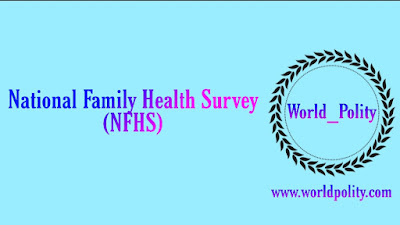The time has come for India to legislate a ‘Right to Health’ ensure everyone can access healthcare without risking falling prey to poverty.
The National Family Health Survey (NFHS) is a large-scale, multi-round survey conducted in a representative sample of households throughout India. The NFHS is a collaborative project of the International Institute for Population Sciences(IIPS), Mumbai, India; ICF, Calverton, Maryland, USA and the East-West Center, Honolulu, Hawaii, USA. The Ministry of Health and Family Welfare (MOHFW), Government of India, designated IIPS as the nodal agency, responsible for providing coordination and technical guidance for the NFHS.NFHS was funded by the United States Agency for International Development (USAID) with supplementary support from United Nations Children's Fund (UNICEF). IIPS collaborated with a number of Field Organizations (FO) for survey implementation. Each FO was responsible for conducting survey activities in one or more states covered by the NFHS. Technical assistance for the NFHS was provided by ICF and the East-West Center.
The First National Family Health Survey (NFHS-1) was conducted in 1992-93.
Who published national family health survey?
The Ministry of Health and Family Welfare (MOHFW), Government of India, designated the International Institute for Population Sciences(IIPS) Mumbai, as the nodal agency, responsible for providing coordination and technical guidance for the survey.
The features of NHFS report 2019-20 :
The initial results of NFHS have been released for 2019-20 along with comparable data for the 2015-16 survey.
Population coverage of approximately 700 million and 21 states have been covered under the National Family Health Survey data.
Tabular data for 131 variables have been released for 2019-20.
The data show that there has been significant improvement in many of these 131 indicators of social welfare.
Analysis provided by NFHS has been misinterpreted by the critics. Comment
It is important to compare India with the rest of the developing world. Trends in hunger, nutrition, inequality, and growth among others can be carefully evaluated in a comparative angle with the help of World Bank data provides.
Some of the misinterpreted data is as follows:
Firstly, Bangladesh underweight percentage in 2015 was stated as 22 per cent but the World Bank data states it to be 30.1 per cent, which makes it 4.7 percentage points (ppt) lower than India, not 12.8 ppt lower.
Secondly, teenage pregnancies in India were 19.9 per cent in 2005 which reduced to 8.7 per cent in 2015 and further got 1 ppt lower in 2019. Hence, net improvement was about 12 ppt in 15 years.
Whereas the level was 10 ppt higher constantly in the developing world during the same period. Even then some editorials claimed of worsening of teenage pregnancies in India.
Thirdly, welfare improved between 2015 and 2019 according to a very large number of NFHS indicators.
A summary of these data is as follows:
Child Mortality: Data on three indicators (neo-natal, infant and under-five) show an improvement between 3 and 4 ppt.
Immunizations: It improved drastically. For instance, the hepatitis B vaccine percentage (for children 12-23 months) increased from 64.8 per cent in 2015 to 83.6 per cent in 2019.
Breast-feeding and diet of children 6-23 months: Average gain of 4 ppt for four indicators.
Negative trend in seven young women indicators is 0: Modern birth control methods, age at marriage, teenage pregnancies, and sexual violence all show improvement. The average improvement in these seven indicators is 3.9 percentage points.
Negative trend in 15 adult indicators is 0: Average gain is 4.1 percentage points.
Other improvements: Some of the indicators show an increase of 9 percentage points and above in households with electricity (9.2 ppt), improved sanitation facilities (17.3 ppt), clean fuel for cooking (18 ppt) and women having a bank account that they use (29.8 ppt increase to a level of 77.2 per cent in 2019).
The points stated above show a large divergence in factual data and its interpretation. There is improvement in close to a 100 indicators and stagnation in less than 5 indicators.
For timely updates, like us on Facebook or join our telegram channel & Subscribe our channel on Youtube. To Read more visit World_Polity. Thank You.















0 Comments
(Please do not enter any spam link in the comment box)